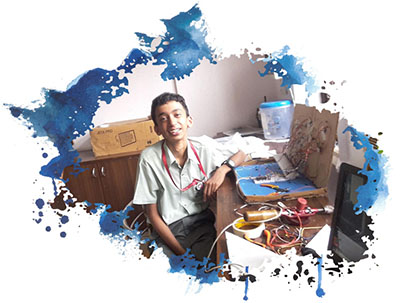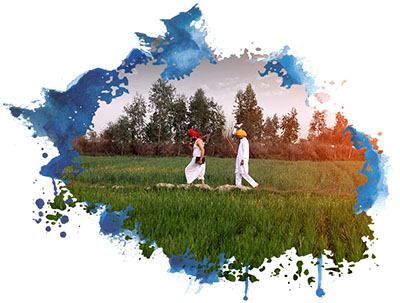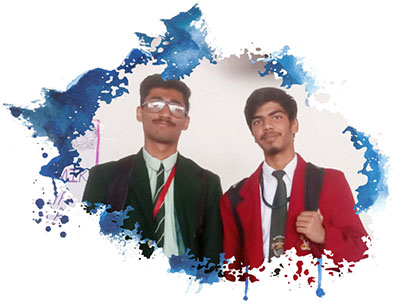IBM India/South Asia Blog
When Technology Meets Curious Minds

Among the many qualities that unite IBMers, one attribute is our desire to be essential. In the Community Connect series, you will read stories on how IBM is helping the society take on challenges with the power of our technology and people.

On a sunny afternoon, Sanchit Jain, Prakhar Sethi and Mayank Goel from DLF Public School in Delhi, were casually chatting with a security guard at school to know how their lives had been back home. The trio, who had little knowledge of rural India, learnt a lot about a farmer's life.
They quickly understood the hapless dependency of farmers on weather conditions and the massive impact of climate change on them. The students decided to do something about it as agriculture continues to be the source of livelihood for more than 58% of Indians. When Artificial Intelligence (AI) was introduced in the high school curriculum for Grade XI and XII, the three musketeers knew what they were going to develop.
IBMers Sattwati Kundu, Data Scientist and Jeffrey Dare, Advisory Software Engineer worked with the Central Board of Secondary Education (CBSE) to curate and structure the curriculum. They also organized a hackathon for CBSE students with the theme "AI for Better India" focusing on ideas with a clear linkage to a sustainable future. IBM mentors focused on building the foundational skills of the students around AI, which will enable them to be creators of AI solutions and not just consumers.

Eliminating the presumption
Sanchit, Prakhar, and Mayank participated in the hackathon. With the help of IBM mentors, the students built "Farmer's Techno Friend", an AI solution for agriculture. Currently most weather stations in the market can collect weather data like temperature, wind speed, cloud cover etc, but these students wanted to bring a unique value proposition.
Sanchit, who did Arduino coding and PCB design for the project, said, "The weather station we developed processes the data and calculates the weather predictions up to 10 to 12 days in advance, which is very critical for farmers. Another unique feature is that the machine not only predicts the climatic conditions but also measures pollution along with other efficient components like the pH and soil moisture.”
"We worked on a model where farmers could access information in their local language on sudden changes in the environment, and receive details on calamities such as forest fires, landslide, floods etc." said Prakhar, who managed the prototype design and data flow for the team.

Training the "Farmer's Techno Friend"
The model was trained with 1,00,990 samples, where 80 percent of the data was used for training and 20 percent for testing. The students achieved a 93% accuracy while they tested the model on-ground.
"We intended to give farmers a solution that can be operated remotely at a reasonable price. As we progressed, we incorporated prediction strategies and AI usage. In the future, we will completely automate this model and make this into an app for easy usage." said Mayank, who took care of the AI coding and algorithms workflow for the project.
The weather station can further be used in climate modelling and prediction of pollution levels. Currently, the students are working on an interface that will tell the farmer the type of crop they can grow based on the time of the year, depending on the weather data, changes in government policies and commercial prices of the crop.
To know how CBSE collaborated with IBM to integrate AI Curriculum in 200 Schools across India - Click here